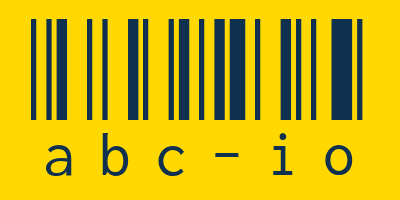A new school year brings a lot of challenges: new friends, new lingo to keep up with, and a steadily increasing pile of homework. Keeping your kids focused on their work can be an absolute nightmare in a hyper-connected world full of devices ready to steal their attention away at a moment’s notice.
Thankfully, there are tools out there that’ll beat back the tide of social media notifications and YouTube rabbit holes so you can make sure your child is getting the most out of their screen time. A VPN isn’t a total cure-all for attention woes, but it can be extremely useful for cutting out that knee-jerk urge to visit a distracting site by blocking it at the source.
The key is understanding how to use these tools effectively to create boundaries that support your child’s learning while still allowing them to access the educational resources they need. If you’d like to know more about how else a VPN can keep your both your children and devices safe, check out our round-up of today’s best VPNs.
Parental controls
Modern VPNs, like ExpressVPN and PrivadoVPN, have evolved far beyond simple privacy protection and have branched out into sophisticated parental control systems that can be fine-tuned to match your family’s specific needs.
From a centralized control hub accessible via the internet, you can implement broad content filtering policies across individual devices. For example, you might want to block access to adult content across the board, or you might want to specifically target gambling sites or social platforms that promote substance abuse.
While you’d probably want to block these sites regardless, being able to dynamically restrict access to entire categories of sites is important for productivity, too. You’ll also find categories for popular social media sites, as well as gaming-related content, so you can keep the distractions at bay until your child’s done with their work for the day.
Blocklists
If you’d prefer a more hands-on approach to content filtering or if there are certain sites that aren’t covered under general category filters, you can use a manual blocklist to zap them. Windscribe is particularly good at this, as it offers VPN-based blocking via a web interface that allows you to specify the URLs you want to block (or whitelist).
If your child is consistently sidetracked by the same distractions, you can simply add the URLs to your VPN’s blocklist to prevent access entirely. This targeted approach is particularly useful for addressing repeat offenders – those specific sites or apps that consistently derail homework sessions.
While these blocklisting systems generally require slightly more technical knowledge to configure effectively compared to simple parental control toggles, they offer more flexibility and precision as a result. It’s worth getting familiar with one of these tools if you’re regularly managing your child’s internet usage.
Thwarting other threats
If you think about the sort of things that could distract your child while they’re working, you’ll come up with some major culprits quite easily: TikTok, Instagram, Snapchat.
Now, while social media is an obvious one, there are many more digital threats out there that don’t just waste your child’s time, but also potentially compromise their security. Think along the lines of targeted ads and phishing attempts – stuff that we struggle with, even as adults.
Round-the-clock protection

Wondering which VPNs you can trust with your family’s digital privacy? Check out our guide to today’s best secure VPNs.
While VPNs on their own are no substitute for today’s best antivirus suites, they do come with plenty of benefits.
First, VPNs mask the IP address of the device you or your child is using. That makes it significantly more difficult for third-party trackers and advertisers to build an invasive portfolio based on internet browsing behaviour. It also makes it far more difficult for malicious actors to work out where you’re connecting from or launch attacks against your device.
Most importantly, some VPNs like NordVPN and ExpressVPN offer cybersecurity tools that can block malware from being downloaded onto your child’s computer by stopping it at the source.
It’s not just malware, as these features also block phishing sites and advertising networks that try to spy on your child’s online activity and serve them targeted ads.
How to set up a VPN
Getting your family protected with a VPN is simpler than you might expect, but there’s a few things you’ll need to keep in mind while setting one up. Here’s our list of the most important things to look out for:
- Choose the right VPN. We’ve done a lot of the background research in terms of safety and privacy, but you need to pick a VPN that meets your needs. You might have a lot of devices to cover in your household, so picking a VPN that has a higher simultaneous device connection count might be the tie-breaker when choosing between two VPNs. Conversely, you might need a VPN that gives you total control over how you filter out websites, in which case, Windscribe is a great choice.
- Install the VPN. Top-tier VPNs offer apps for most devices now, so in addition to your family computer, you might also want to cover your child’s phones and tablets. If you need to cover a games console, it might be best looking at a VPN that has great router coverage.
- Make sure the VPN is enabled. Once you’ve installed a VPN on the device you want to protect, make sure you log in with your VPN credentials (usually found on the web dashboard for any given provider) and hit the “connect” button to engage the VPN. While you’re there, you’ll want to make sure auto-connect is turned on from the options as well as the kill-switch, which disconnects the internet if the VPN connection goes down, protecting you and your family from IP leaks.











Add Comment